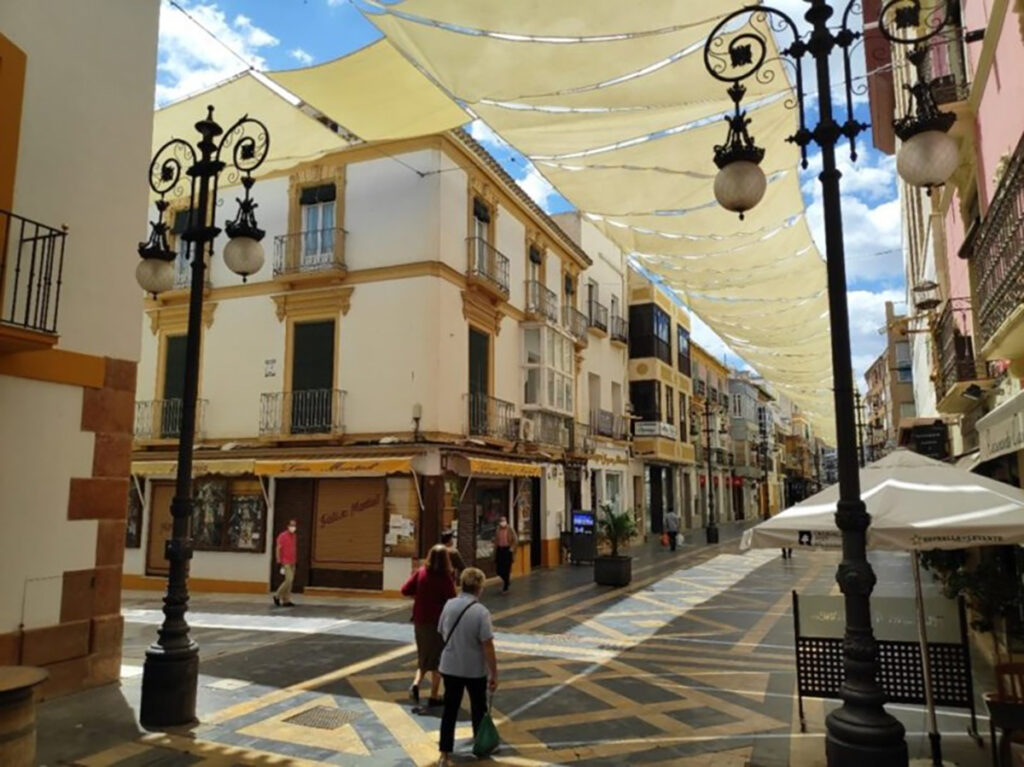Shading Facilities
BUILDINGS & ENVIRONMENT

Image source: Life Adaptate project in Lorca (SPAIN)
Introduction
Natural based solutions are the best elements we can include in our cities to promote shadowing in our public spaces. Nevertheless, when this is not possible or difficult, a city can choose to install awnings. Awnings can be installed by means of anchors on the building facades to shade complete streets. Shading elements have demonstrated to reduce urban spaces temperatures by several degrees.
Description
The climate change risks that some EU regions are experiencing are heat waves and urban heat islands. These risks can be tackled via shading elements, for example installing shadow corridors in the public spaces to counteract the urban heat islands. This action involves the installation of awnings in various crowded streets or key routes of the city creating shaded areas and corridors that improve the thermal comfort of pedestrians, reducing the temperature in the building facades and pavements, as well as reactivating trade in the months of extreme heat.
As well, other options are horizontal blades attached to the facades of buildings to offer effective solar shading without impairing the view. These sunshades protect the users against an excessive level of heat due to solar radiation, the possibility of glare when the solar altitude is at its highest or when the levels of radiation are very high. Together with a proper orientation of the building, the sunshades enable optimal use of the incoming light in times of low solar altitude.
Natural based solutions, white reflection areas in roof areas, green roofs, or PV shading facilities are other possibilities that help us minimise extreme temperatures.

